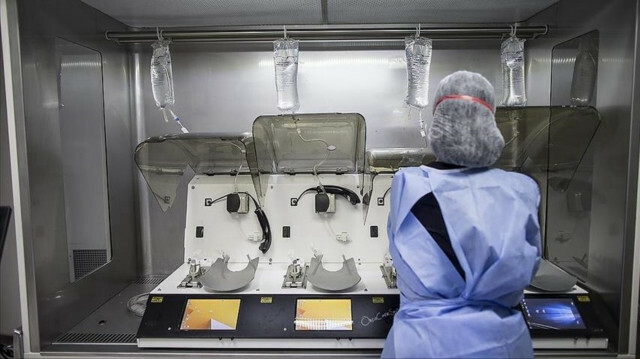
Although the incidents of tuberculosis have decreased in South Asia from 5.4 million cases in 2000 to 3.8 million in 2020, the health experts believe that the still staggering numbers call for effective policies.
Speaking to Anadolu Agency, coinciding with the fight against tuberculosis week which ends on Wednesday, Digambar Behera, an award-winning Indian pulmonologist urged for aggressive and focused efforts to curb recurrences of tuberculosis or TB in India and beyond.
"Alone India has 27% of world's TB cases. The reasons are multiple like malnutrition, poverty, population, etc. In India, we need focused attention because new cases are coming and diagnosis and treatment are difficult,” he said.
According to World Health Organization (WHO), world’s half of TB patients are found in Bangladesh, China, India, Indonesia, Nigeria, Pakistan, the Philippines, and South Africa.
The Global Tuberculosis Report released in 2021, by the WHO also described India among the countries, recording the highest drop in TB case reportings from 2019 to 2020.
In March 2017, the Indian government had announced that TB in the country will be eliminated by 2025.
Last month, the government informed the parliament that "the country has reduced the incidence of TB from 217 per 100,000 population in 2015 to 188 per 100,000 population in 2020.” That corresponds to a decline of 13%.
But, Behera said it would be a difficult task to achieve the target of the complete elimination of the disease by 2025.
"Because of the increasing focus and diversion of resources to COVID-19, this target looks difficult," he said, adding that because of the pandemic the patients had not visited the hospitals.
- Bangladesh predicament
In neighboring Bangladesh, the high density of population, lack of consciousness, poverty, and superstitions have made the country prone to TB, according to health experts.
Speaking to Anadolu Agency, Dr. Mohammad Abu Raihan, deputy director of Bangladesh’s main tuberculosis hospital in the capital Dhaka said that approximately 35% of cases of tuberculosis are not detected at early stages due to lack of resources.
“Besides, many patients do not complete their treatment course. Suppose a patient is prescribed for a six-month medication, but he or she leaves taking medicine just after 15-20 days after noticing reasonable progress though germs continue inside the infected,” said Raihan.
Further, superstitious beliefs also do not allow people to visit health facilities.
“Many come to us at the last stage with critical conditions for treatment against tuberculosis,” he said.
According to official data of Bangladesh’s Health Ministry, more than 350,000 people die of TB in the country every year.
The WHO in its 2020 report ranked Bangladesh as the seventh most affected among the 30 high tuberculosis-burden countries and 14th among those reporting high multidrug-resistant TB.
Underlining the disease is one of the country’s major health problems, Assistant Director of TB Hospital Dr. Ayesha Akhter, said addressing infectious diseases has remained challenging due to the high density of population.
“We have no strong database for tuberculosis patients as we are maintaining in the case of the global coronavirus pandemic though a good number of people in Bangladesh died in the disease,” she said.
- Multi-drug resistance in Pakistan
In another South Asian country Pakistan, according to health experts, nearly half a million people are reporting TB every year.
According to the National TB Control Program, 573,000 people were reported having been infected with TB in 2020 with 46,000-50,000 deaths.
"The goal is set to effectively end the TB epidemic in Pakistan by 2035. The main problem we are seeing is the missing cases where people come to the hospital, they get diagnosed and then they disappear. They infect more people," said Dr. Abdul Wali, deputy national coordinator of the TB program.
Dr. Javed Hayat Khan, a pulmonologist said that due to latent TB the patient gets into multi-drug resistant TB and his treatment gets more difficult.
"Latent TB is a silent disease. It happens when a person has the bacteria of TB in their body in small numbers and the doctors tried to contain it with the medicines but if the patient leaves the course and do not complete it then it becomes more difficult to stop it," said Khan.













